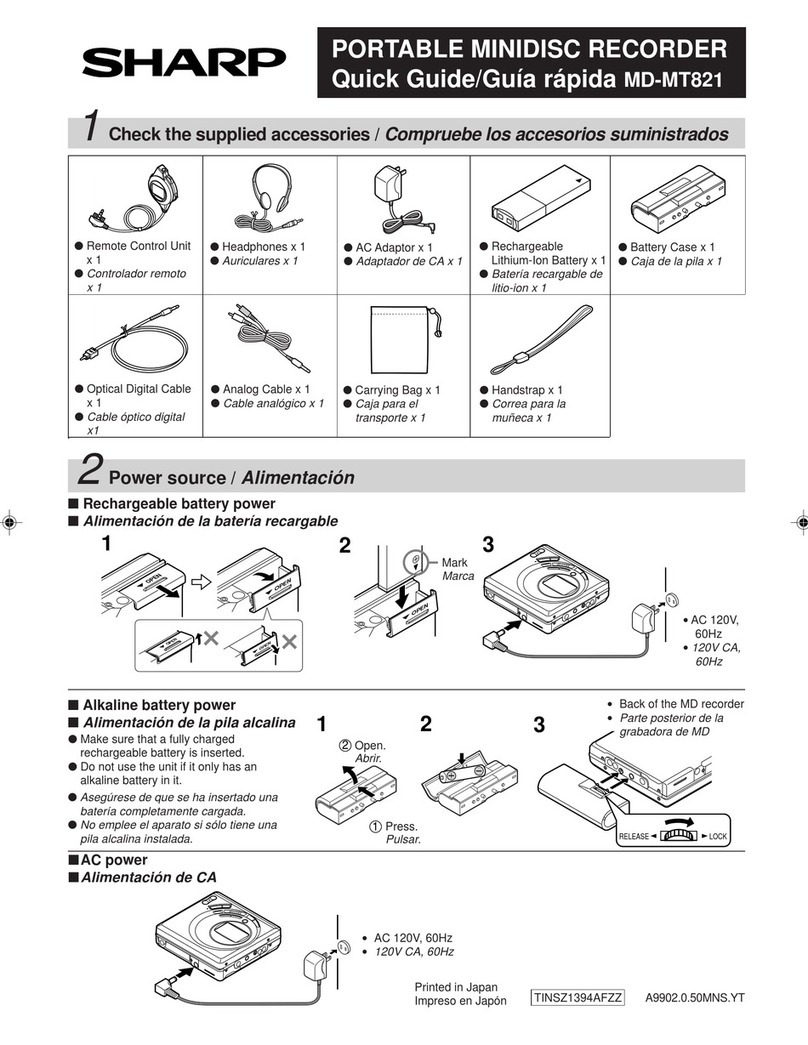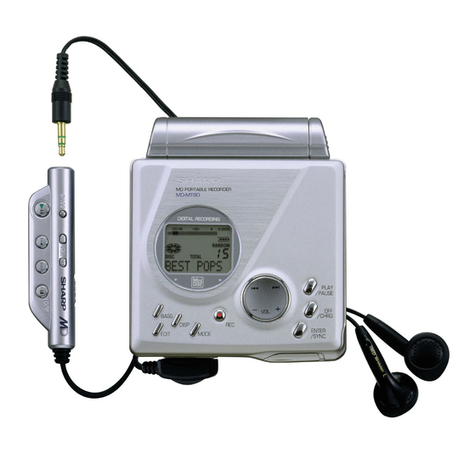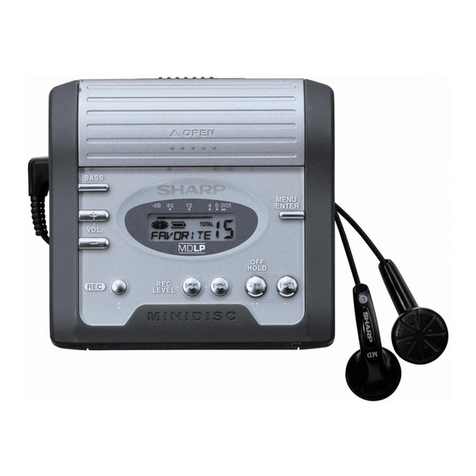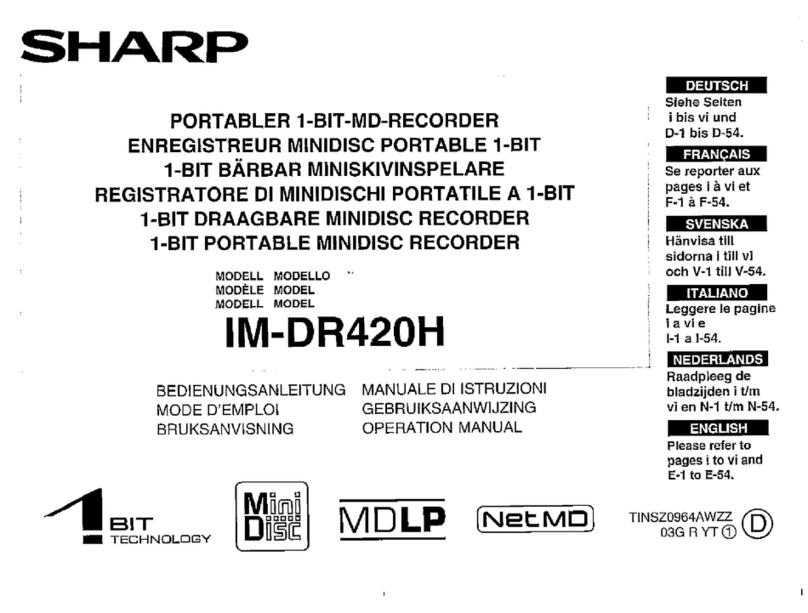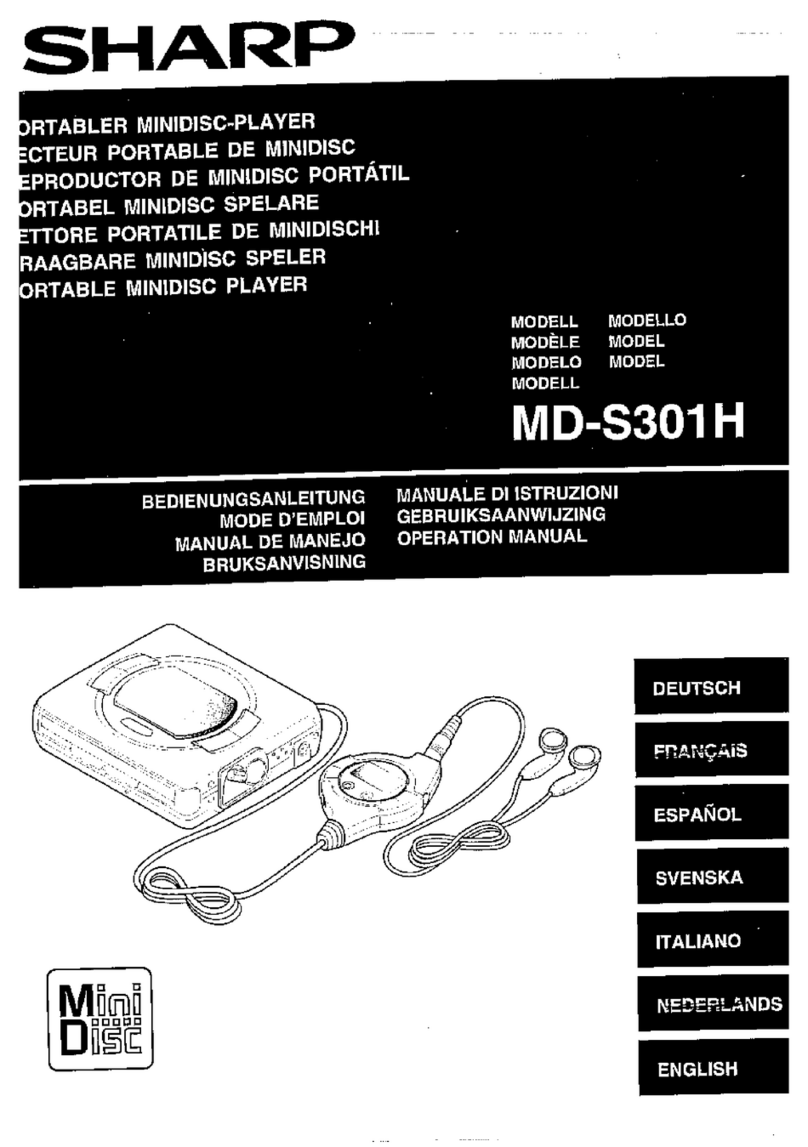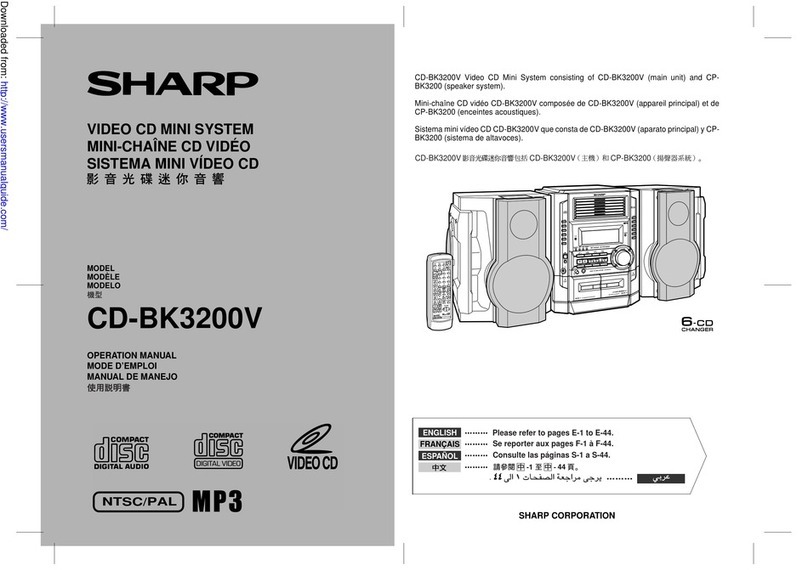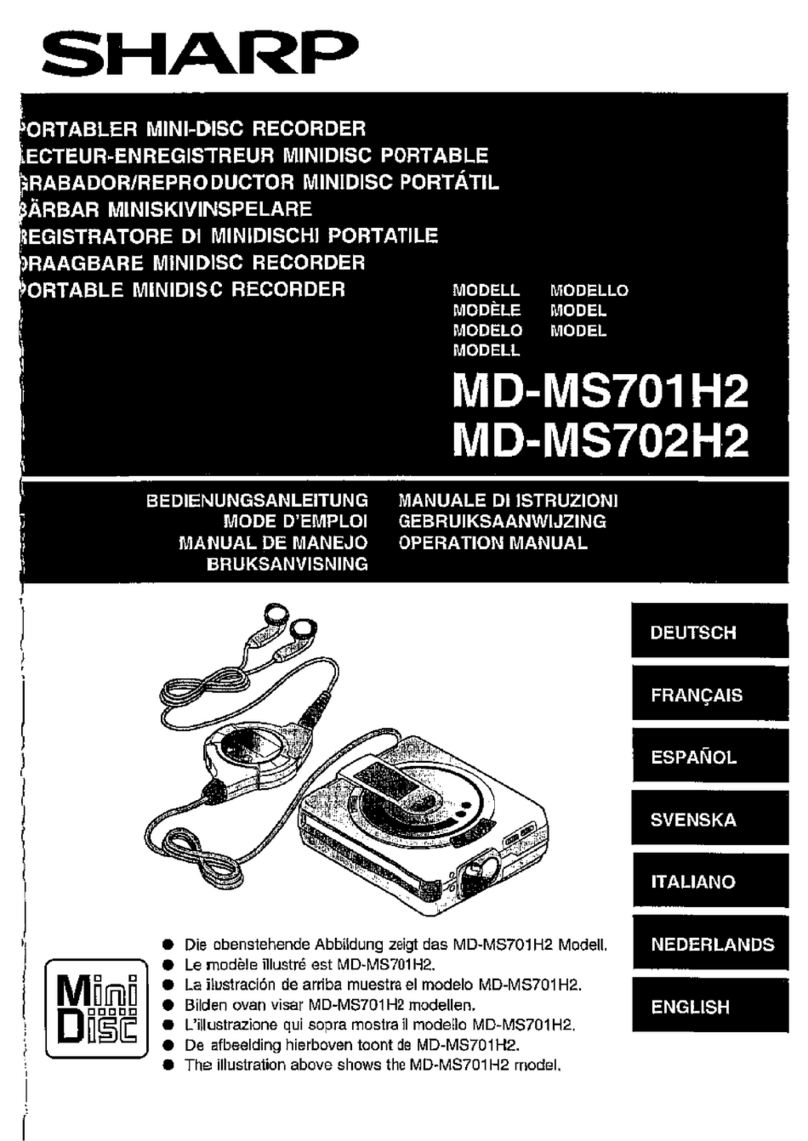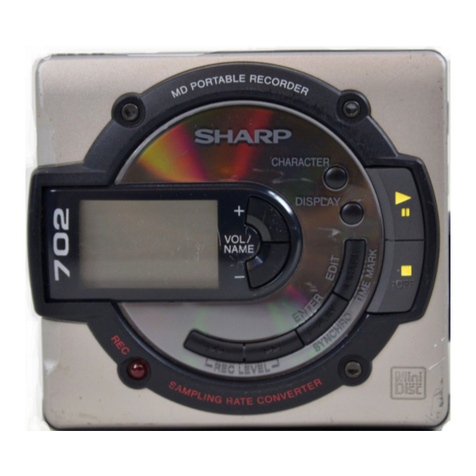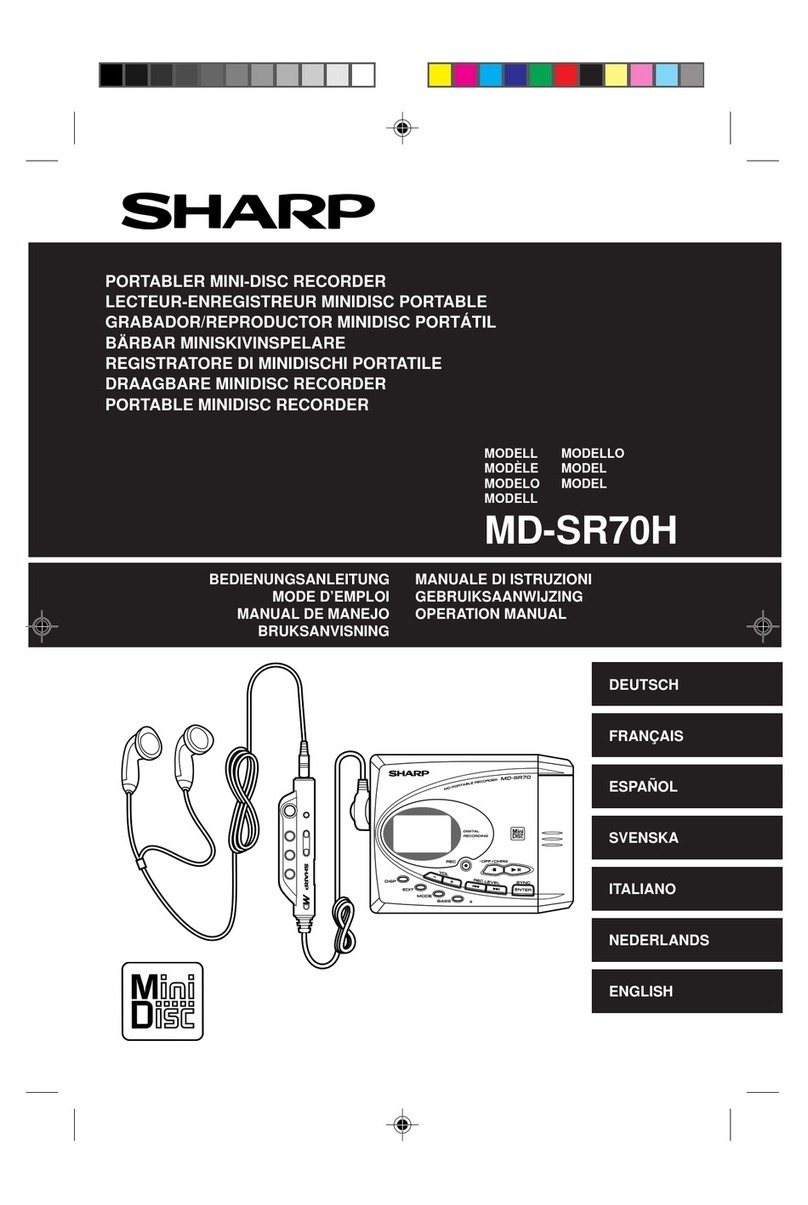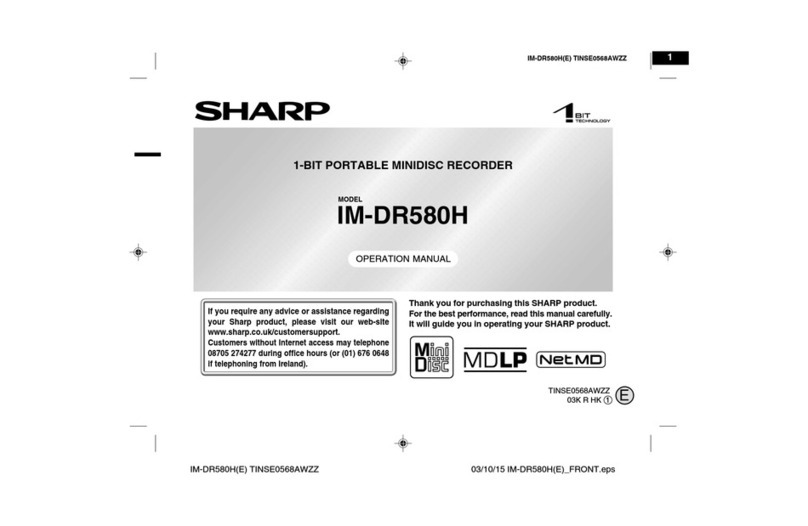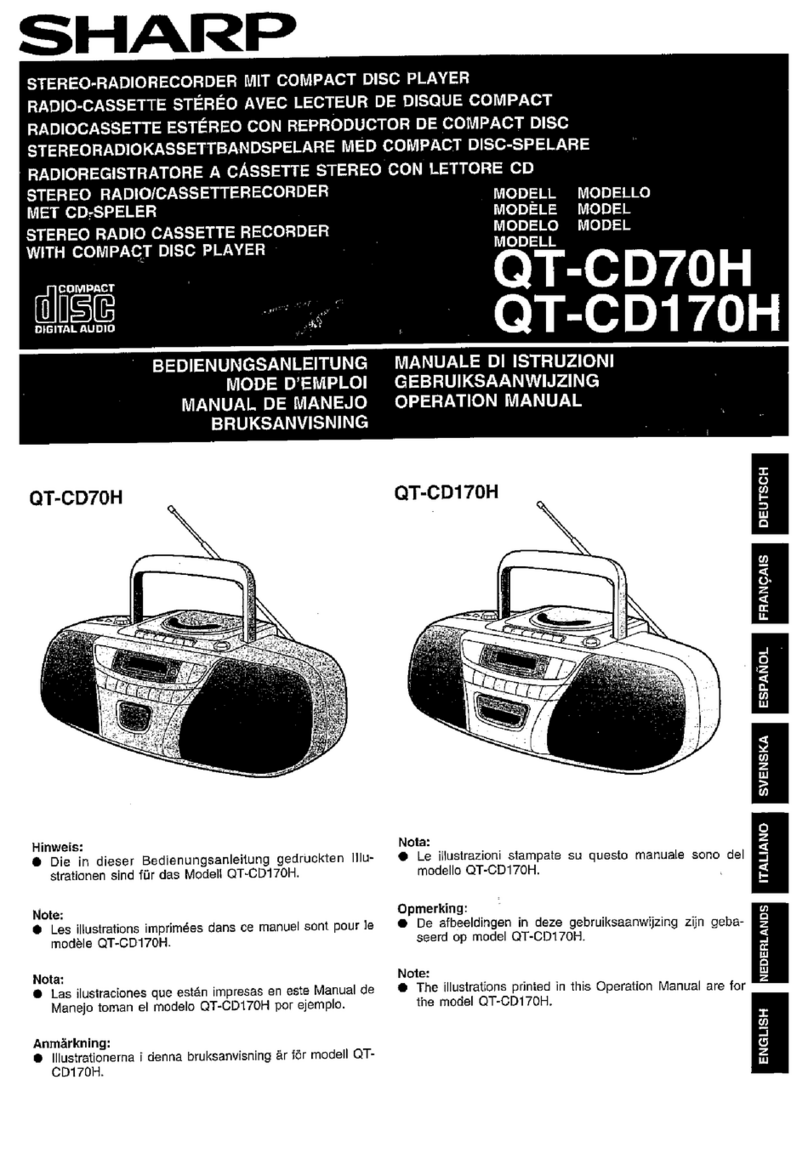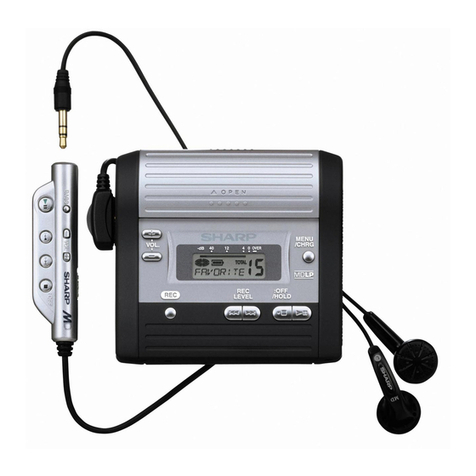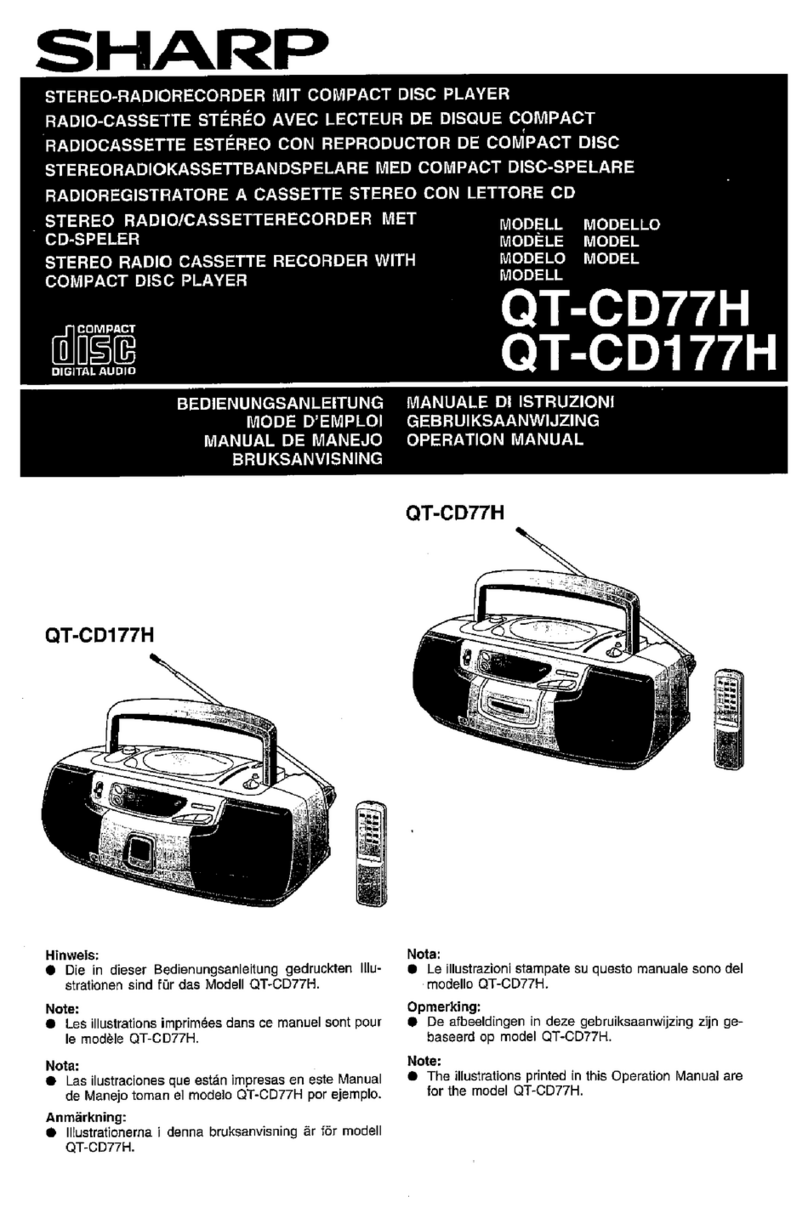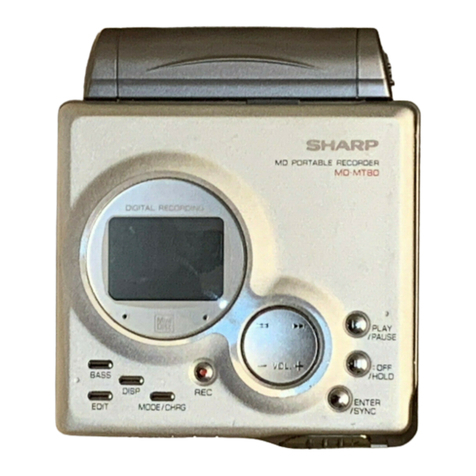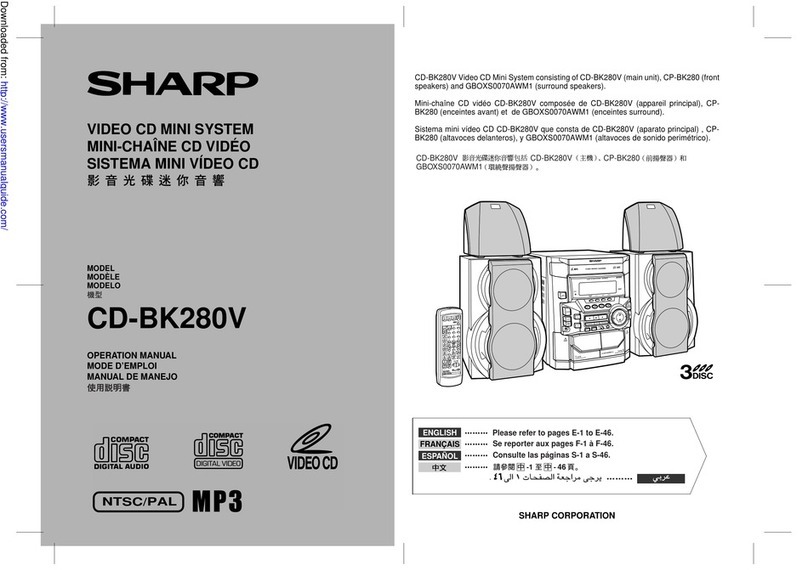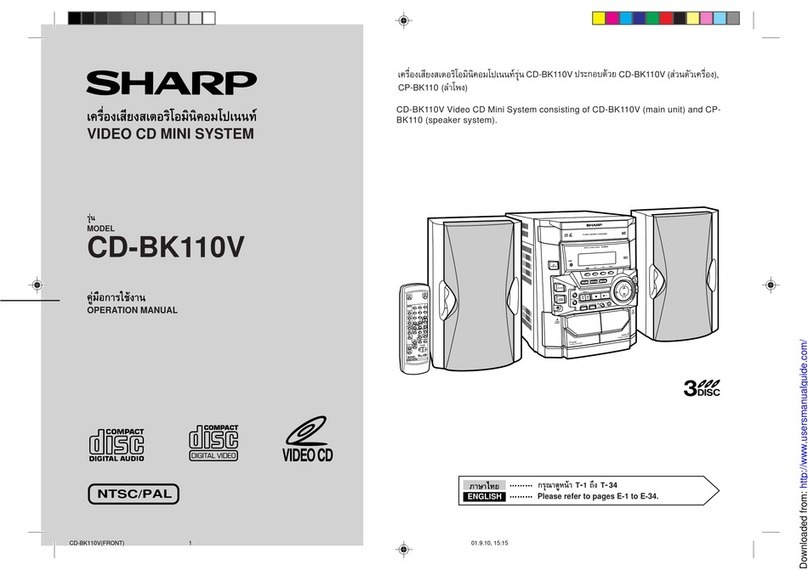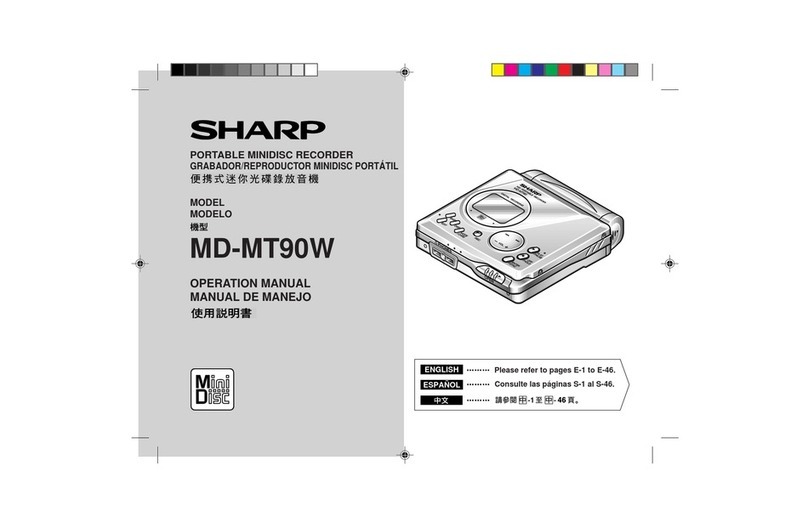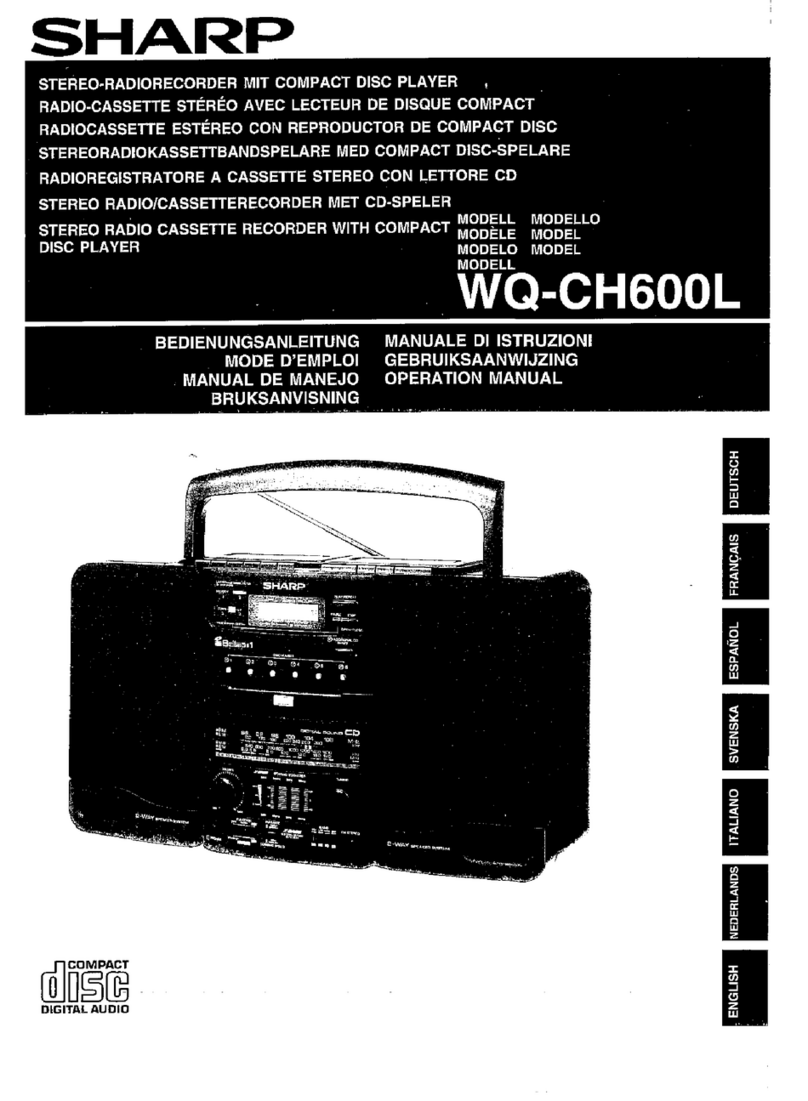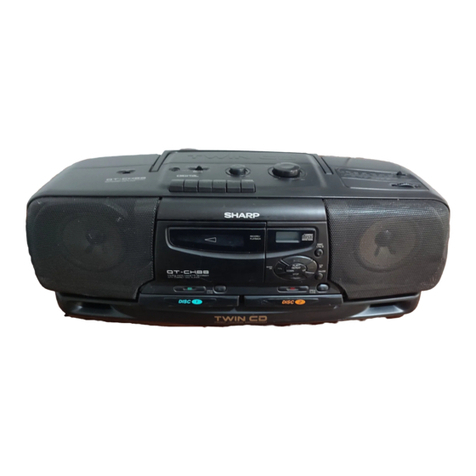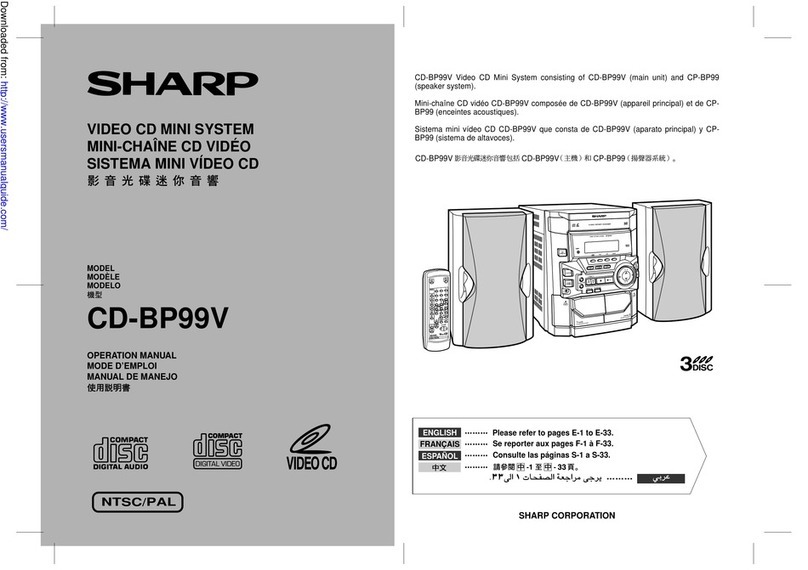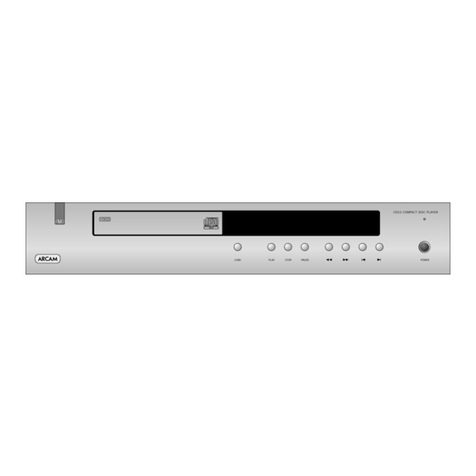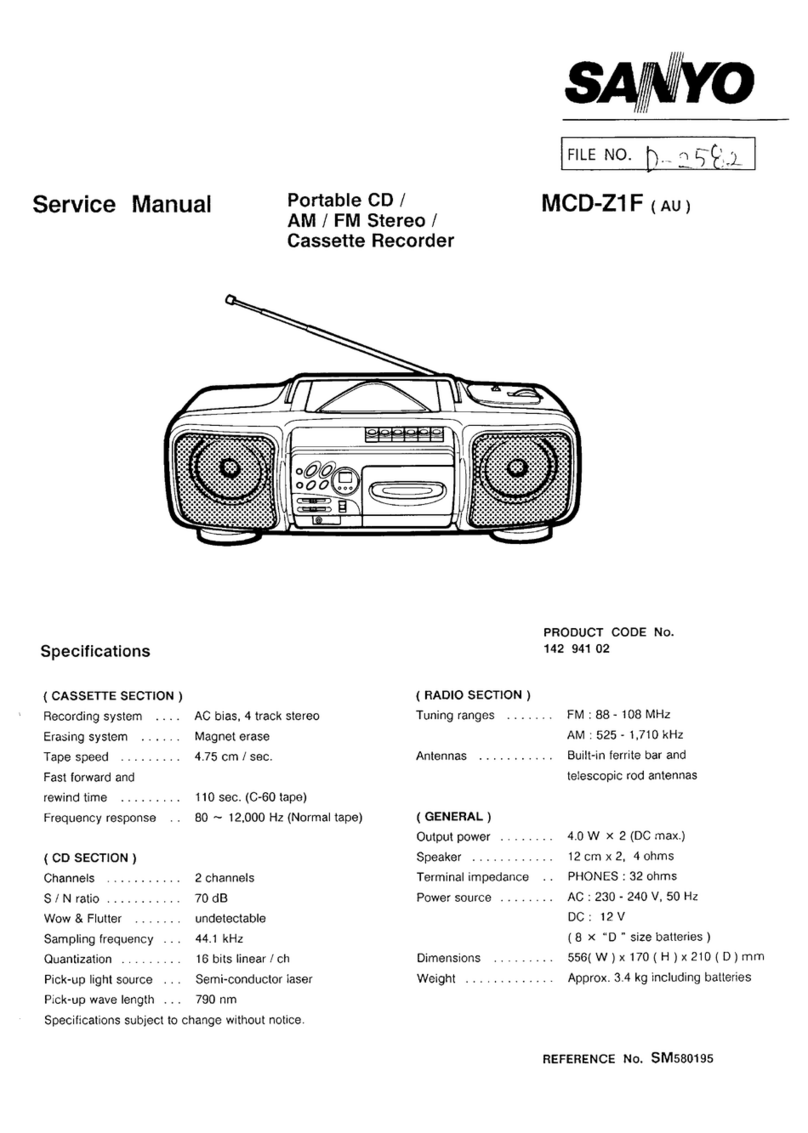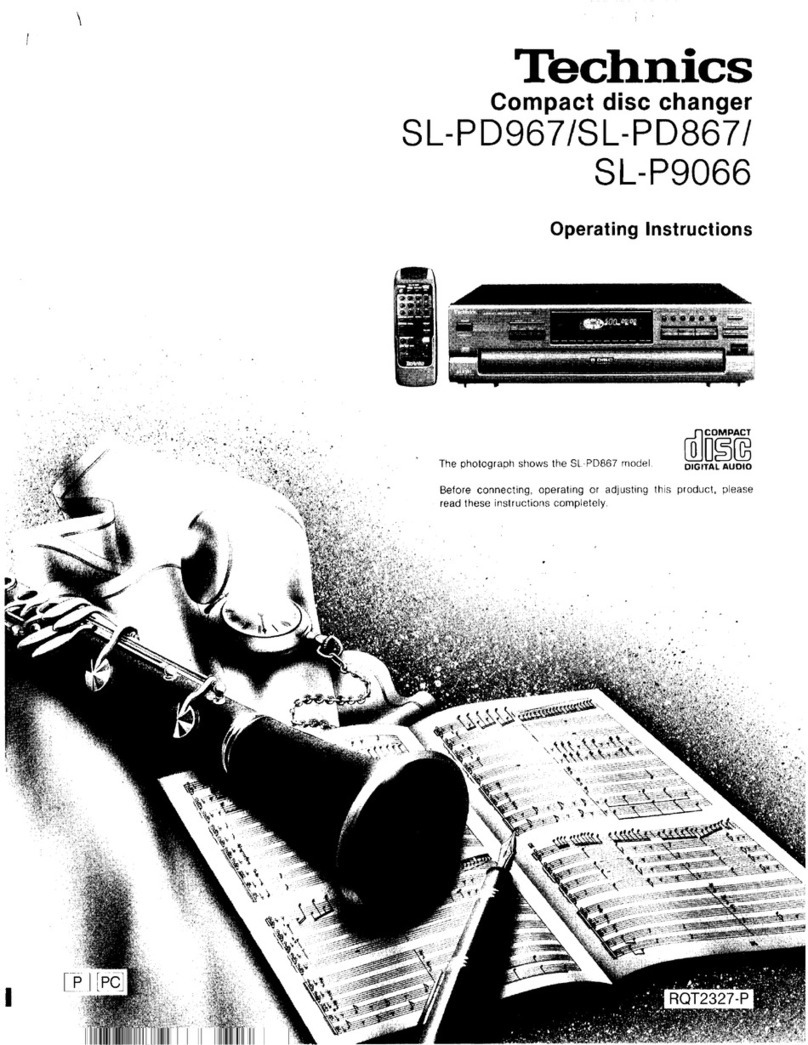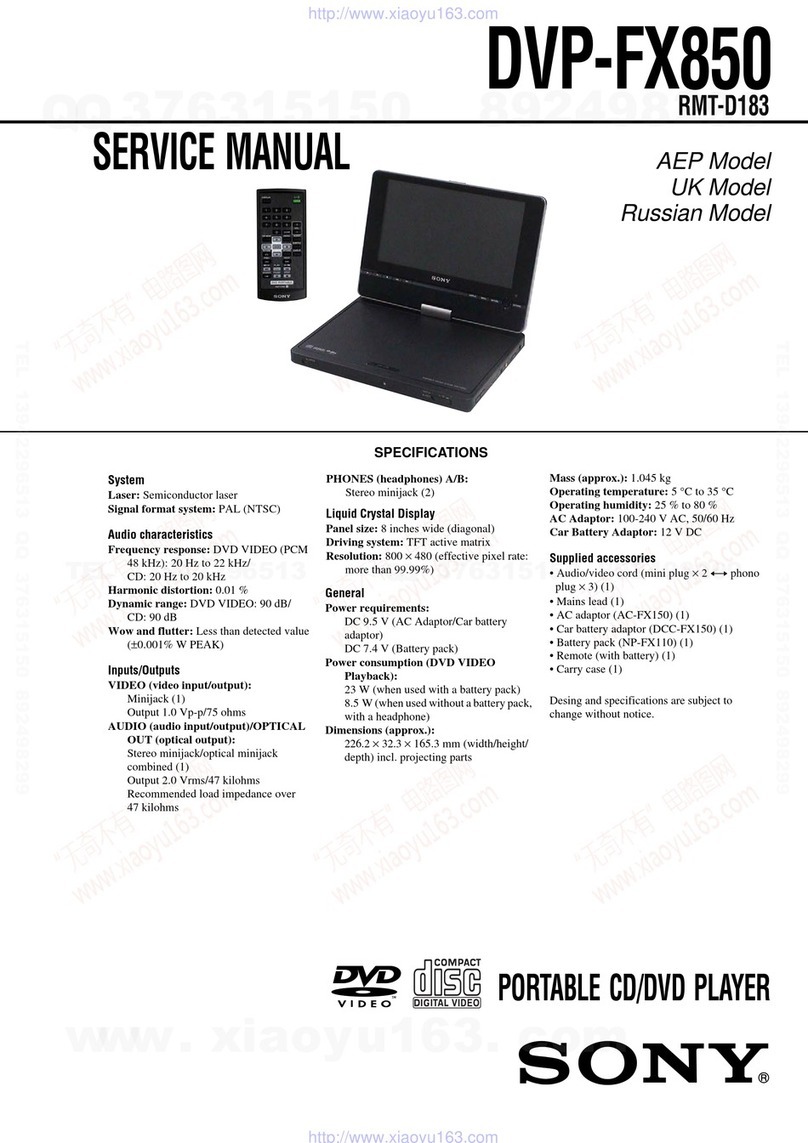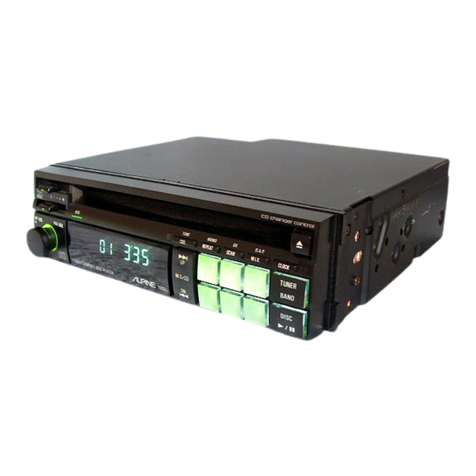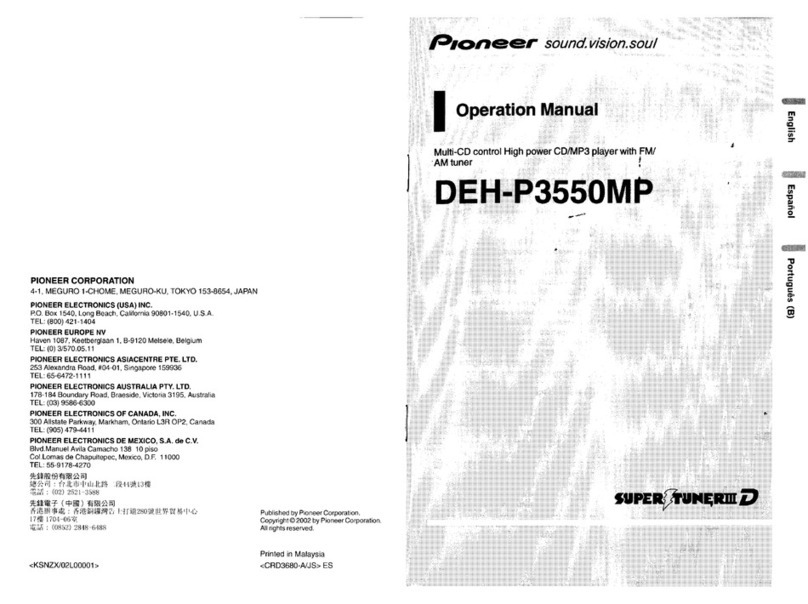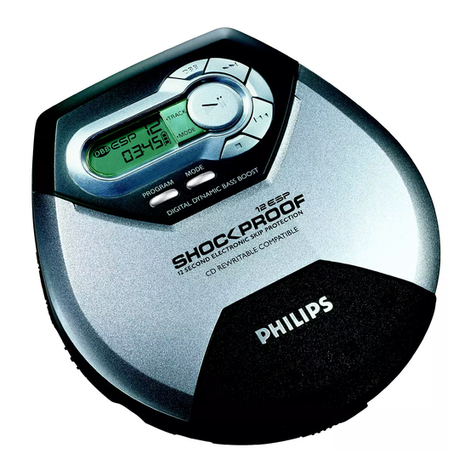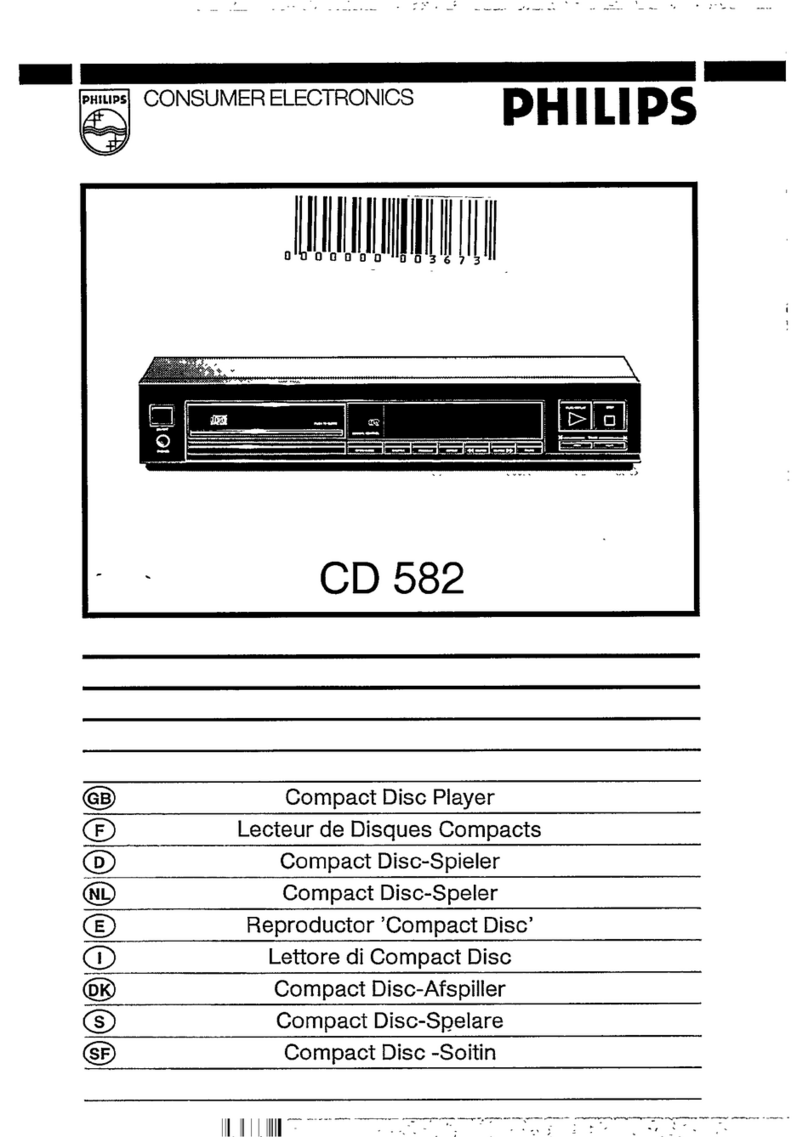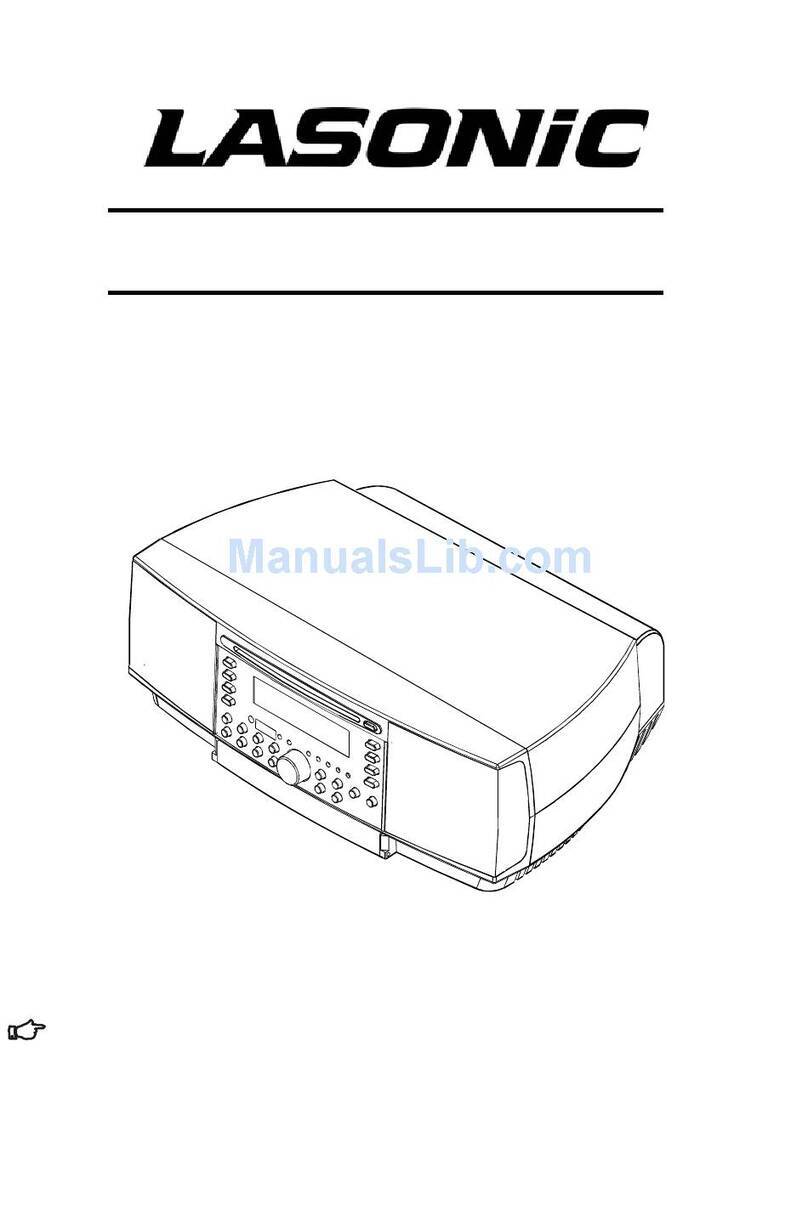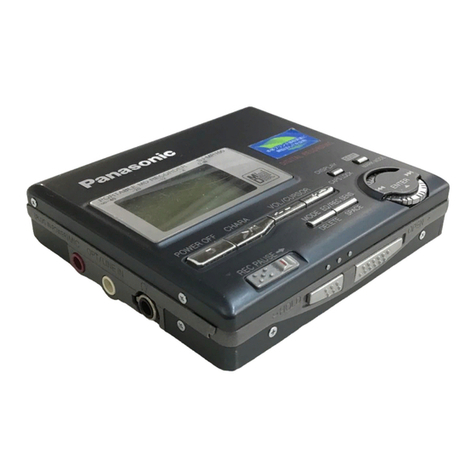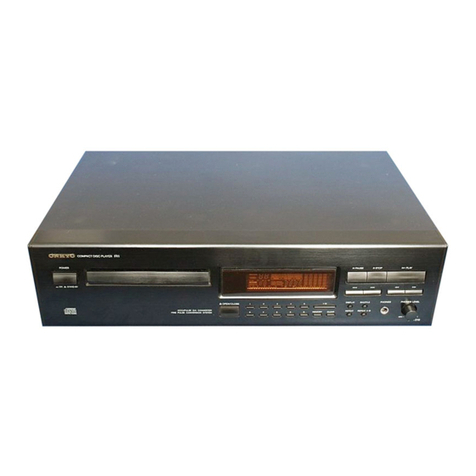
– 9 –
CD-K7000V,CP-C7000
DISASSEMBLY
Caution on Disassembly
Follow the below-mentioned notes when disassembling
the unit and reassembling it, to keep it safe and ensure
excellent performance:
1. Take cassette tape and compact disc out of the unit.
2. Be sure to remove the power supply plug from the wall
outlet before starting to disassemble the unit.
3.Takeoff nylon bands or wire holderswhere theyneed to
beremovedwhendisassemblingtheunit.Afterservicing
theunit,be sure to rearrange the leadswhere theywere
before disassembling.
4. Take sufficient care on static electricity of integrated
circuits and other circuits when servicing.
Figure 9-2
1 Top Cabinet 1. Screw ..................... (A1) x4 9-1
2 Side Panel 1. Screw ..................... (B1) x8 9-1
(Left/Right)
3 CD Player Unit/ 1. Turn on the power supply, 9-2
CD Tray Cover open the disc tray, take out
the CD cover, and close.
(Note 1)
2. Screw ..................... (C1) x1
3. Hook....................... (C2) x3
4. Hook....................... (C3) x2
5. Socket .................... (C4) x3
4 Rear Panel 1. Screw ..................... (D1) x7 9-2
2. Socket .................... (D2) x1
5 Main PWB 1. Screw ..................... (E1) x1 9-2
2. Socket .................... (E2) x4 10-3,4
3. Flat Cable............... (E3) x1 10-3
4. Tip Wire.................. (E4) x1
6
Power Amp. PWB
1. Screw ..................... (F1) x5 10-4
2. Socket .................... (F2) x3
3. Flat Wire................. (F3) x1
4. PWB Holder ........... (F4) x4
7 Front Panel 1. Screw ..................... (G1) x3 10-4
8
Volume Mechanism/
1. Knob....................... (H1) x1 10-5
Volume Motor 2. Screw ..................... (H2) x4
3. Socket .................... (H3) x1
4. Belt ......................... (H4) x1
5. Screw ..................... (H5) x2
9 Karaoke PWB 1. Screw ..................... (J1) x2 10-5
10 Display PWB 1. Screw .....................
(K1) x11
10-6
2. Flat Cable............... (K2) x1
11 Tape Mechanism 1. Open the cassette holder. 10-6
2. Screw...................... (L1) x5
12
Headphones PWB
1. Screw ..................... (M1) x1 10-6
13 Turntable 1. Hook....................... (N1) x2 11-1
2. Cover ..................... (N2) x1
14 Disc Tray 1.
Turn fully the lock lever in the
10-1
arrow direction.
2.
While holding the lock lever, rotate
10-2
the cam gear until the cam gear
rib engages with the clamp lever.
3.
Push the slide holder backward to
11-2
engage the claw with the groove
and remove it in the direction
of the arrow. ..............
(P1) x6
15 CD Video PWB 1. Screw ..................... (Q1) x1 11-3
(Note 2) 2. Hook....................... (Q2) x2
3. Socket .................... (Q3) x4
STEP REMOVAL PROCEDURE FIGURE
Figure 9-1
CD-K7000V
STEP REMOVAL PROCEDURE FIGURE
16 CD Mechanism 1. Hook....................... (R1) x2 11-4
2. Hook....................... (R2) x3
17
Loading Motor PWB
1. Hook....................... (S1) x5 11-4
Note 1:
How to open the changer manually. (Fig. 10-1)
1. In this state, turn fully the lock lever in the arrow direction
through the hole on the loading chassis bottom.
2.
While holding the lock lever, rotate the cam gear anticlockwise
until the cam gear rib engages with the clamp lever.
(Fig. 10-2)
3. After that, push forward the CD slide holder.
Note 2:
1.Afterremovingtheconnectorfortheopticalpickupfrom the
connector, wrap the conductive aluminium foil around the
front end of the connector to protect the optical pickup from
electrostatic damage.
Note 3:
1. Be careful not to break the claw of the CD mechanism.
2.Whenfiningbackthecamgearassembly,letitlockbyfront
movement.
(B1)x4
ø3x10mm (B1)x2
ø3x10mm
Rear
Panel
(B1)x2
ø3x10mm
Side Panel
(Right)
Side Panel
(Left)
(A1)x2
ø3x12mm
(A1)x2
ø3x12mm Top Cabinet
(E1)x1
ø3x6mm
(C3)x1
(D1)x2
ø3x10mm
CD Player
Unit
CD Tray Cover
Pull
(C3) x1
(C4)x3 (C2) x3
1
1
2
CD Video
PWB
(C1)x1
ø3x10mm
(D1)x5
ø3x10mm
Power Amp.
PWB
(D2)x1
Rear
Panel
Main PWB
